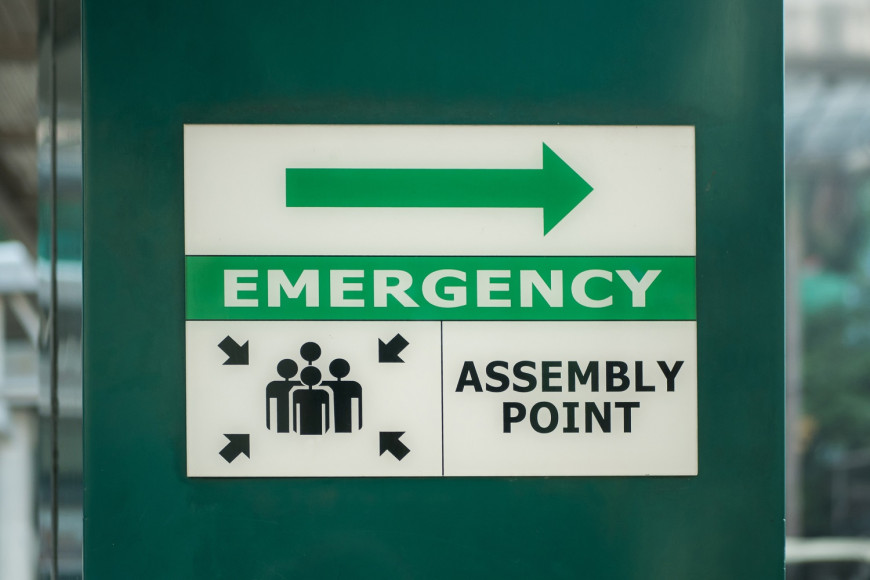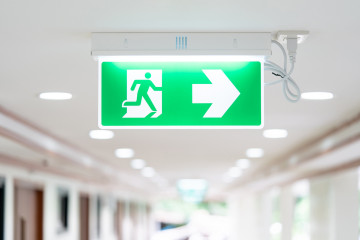The events of recent years have shown us that the world of work is evolving at an unprecedented pace, and the concept of a traditional office environment has taken a back seat to the rise of the hybrid work model. While some businesses have fully returned to work, the transformative shift to a hybrid work model for offices has led to some new opportunities and challenges for businesses. This model has added another layer of complexity for employers as they navigate how to apply traditional regulatory requirements in a hybrid work environment.
As people return to the office, it's essential to refresh and update your emergency response programs, including any written plans, as well as Emergency Response Teams (ERTs). It's a critical part of ensuring the safety of your employees in the workplace. These teams should be well-versed in emergency procedures and ready to act swiftly when needed.
While a return to the office presents an opportunity to refresh your existing programs, it also can lead to some challenges around how to adapt that program to meet the needs of your distributed workforce. When the in-office employee population changes daily, you may be wondering: How will you determine who is a part of the ERT? How will you train your employees on evacuation procedures? How will you manage evacuation drills? What if there’s an emergency and you need to take a headcount? How will emergencies be communicated to those not in the office?
Creative Solutions for a Changing Landscape
Whether your employees are back in the office full-time or just a portion of the week, consider the following ideas as you refresh and re-implement your emergency response program:
- Landlord Coverage: Some companies have been able to work closely with landlords for ERT coverage within their shared office spaces. Working with building management is a valuable step in aligning safety protocols with what the landlord has in place. Consider developing Personal Emergency Evacuation Plans (PEEPs) for employees who may need assistance in evacuating and collaborate with your landlord to support those employees during an emergency evacuation.
- Office Size: With fewer employees in the office at a given time, some companies are considering downsizing office spaces to a smaller footprint. This could impact the emergency response planning and team requirements that apply to your facility. For example, in Mexico City, the threshold for a complex civil protection internal program (PIPC) emergency response plan is set at 100 employees or 250 m2. Additionally, consider how the applicability of regulations could change when looking at the number of desks available in the office vs. the country headcount.
- Virtual Training: To ensure that employees are prepared for emergencies, organizations are turning to virtual training sessions. These sessions cover everything from evacuation procedures to first aid essentials and allow training to be provided without the need for all employees to be in the office.
- Leveraging Technology: In some cases, companies are embracing technology by placing QR codes near exits. These QR codes provide instant access to emergency evacuation information, such as procedures and assembly points. Additionally, consider placing QR codes with important safety information on the back of employee badges so they can access information quickly in the event of an emergency.
- Communication Plans: There is little prescriptive direction and a lack of consistent guidance related to communication during an emergency. Relying on everyone having a cell phone is not optimal as most companies do not provide a phone to every employee. Additionally, during a severe emergency, connection to the internet and/or cell service providers could be compromised or nonexistent. A number of solutions may be needed to ensure all employees are properly informed. For example, services such as one-call software that alerts employees of an emergency event in an automated message, PA verbal announcements in the building, a designated website where everyone should check to get company information and/or check in, or Text/X/Slack message groups. Whatever method is chosen should be used during drills, have clear and concise messaging that focuses on desired actions, and include prepared messages for each event in the site’s emergency response plan.
- Recruitment Ideas: With limited employees in the office to be a part of your ERT, consider some fresh ideas for recruitment to get employees to want to be involved. Whether that’s free company swag or even lunch during training sessions, these perks will help entice employees to join. Additionally, consider how you market the ERT within your company – the ERT is a crucial role within the office that helps to keep fellow employees safe. These office heroes will learn valuable skills they can use outside of work, such as first aid and CPR certifications. The skills they learn will not only help to keep their office safe but could also keep friends and family safe as well.
- Alternative Training Topics: In addition to standard CPR, first aid, and fire warden training, offering alternative training topics as an option to ERT members could further entice employees to participate. Trainings such as pet CPR, mental health first aid, or personal safety and security courses may help to pique employees’ interest in the program.
Training and Communication is Key
Regardless of the strategy you adopt, the key is to ensure all employees understand the expectations. Proper training is crucial, as it ensures that your team's level of attention to safety will meet the requirements and regulations of your jurisdiction.
Train your employees to understand evacuation procedures and processes for checking in post-evacuation. Review the evacuation drill requirements for your jurisdiction as well and ensure you run regular drills. This not only keeps employees safe but also ensures that your organization remains compliant. Ensure these drills are documented and records are kept.
Additionally, consider how you will adapt your program to address your remote workforce. This could involve some sort of communication plan for employees to report their status after a disaster has struck their area.
Lastly, remember that compliance goes hand in hand with emergency planning. It's not just about having a plan; it's about communicating that plan intentionally to your employees to meet your basic compliance obligations.
Adapting to the hybrid work model presents unique challenges for emergency response planning and first aid or fire warden requirements. However, with a little creativity, collaboration, and thorough employee training, you can meet these challenges head-on while ensuring the safety and well-being of your workforce, regardless of their location.
Do you need help with your hybrid or flexible workforce? Reach out to our team of experts today to get help!
Want more news and insights like this?
Sign up for our monthly e-newsletter, The New Leaf. Our goal is to keep you updated, educated, and even a bit entertained as it relates to all things EHS and sustainability.
Have any questions?
Contact us to discuss your environment, health, safety, and sustainability needs today.






